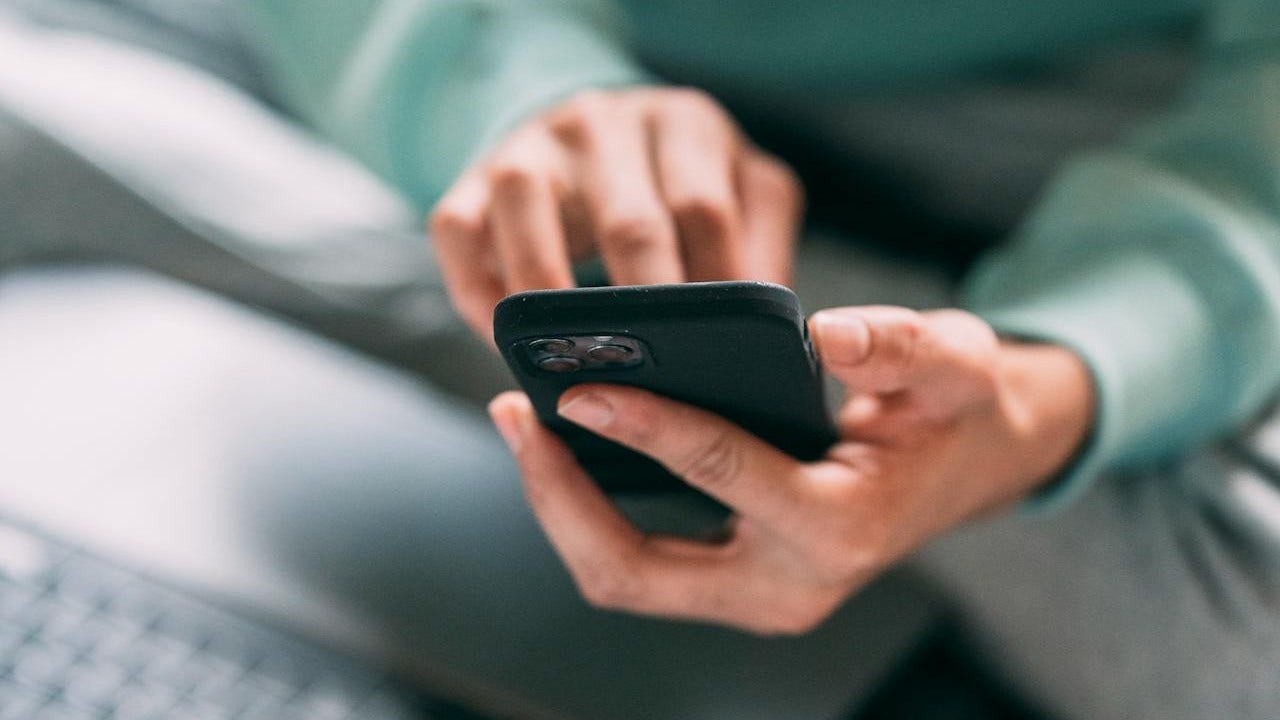Finance
How Default Risk Triggers Credit Downgrades

As the U.S. inches closer to the June 1 deadline to avoid defaulting on our $31.4 trillion national debt, ratings agencies have already begun hinting at downgrading the nation’s credit — a move that would unleash vast consequences across commercial real estate capital markets.
Treasury Secretary Janet Yellen warned yet again this week that the U.S. won’t be able to pay its bills — specifically Treasurys, the bedrock of the global financial system — in the event Congress fails to raise the debt ceiling by the “X date” of June 1. Federal Reserve Chairman Jerome Powell said earlier this month that “no one should assume that the Fed … can really protect the economy” in the event a debt ceiling breach triggers a national default.
While reports surfaced Friday morning that President Joe Biden and House Speaker Kevin McCarthy are near a deal, it’s unclear the type of support McCarthy can gain from House conservatives on any sort of compromise. GOP Rep. Matt Gaetz of Florida has stated he and his colleagues “don’t feel like we should negotiate with our hostage,” while GOP Sen. Mike Lee of Utah has already stated his intention to potentially scuttle a deal in the Senate, which has a one-vote Democrat majority.
The big three ratings agencies — S&P Global Ratings, Moody’s and Fitch Ratings — have already taken notice of the fragile state of affairs. On Wednesday, Fitch placed the United States’ long-term foreign currency issuer default rating on watch for a downgrade, threatening to downgrade its AAA status prior to the “X date.”
“The brinkmanship over the debt ceiling, failure of the U.S. authorities to meaningfully tackle medium-term fiscal challenges that will lead to rising budget deficits, and a growing debt burden signal downside risks to U.S. creditworthiness,” Fitch said in a statement.
Moody’s warned this week that if the Treasury misses even one interest payment, then the U.S.’s stellar credit rating would be lowered a notch and that the debt-ceiling brinkmanship could “permanently” impact the creditworthiness of the government, according to The New York Times. S&P Global Ratings lowered the U.S. credit rating from AAA to AA+ in 2011, the last time Republicans used the threat of default to extract spending cuts and other concessions from a Democratic president, and has not raised it since.
“This is really, really dangerous,” said Robert Hockett, professor of corporate law and financial regulation at Cornell Law School. “A downgrade of Treasurys … heightens the possibility of a deep, deep recession that could spiral into a depression.”
The downgrade of the U.S. credit rating is intimately tied to borrowing costs and interest rates throughout the financial system. Most government debt is funded by the sale of U.S Treasurys -– T-bills, T-bonds and T-notes -– into the global economy, where investors see them as risk-free bonds that serve as the benchmark interest rate for all other forms of corporate, financial and municipal debt in the United States. If those rates are deemed a high risk — especially in the event of a mass ratings downgrade or debt default — then yields on Treasurys will spike, raising interest rates across the financial system and contracting credit at a time of increasingly tight liquidity.
Hockett said the interest rate hikes across the system would occur immediately, if not a day or two before the debt breach were to occur.
“People get quite nervous as the zero hour approaches,” he said. “You’ll see people dumping Treasurys massively, and that would cause yields to rise because that’s the only way for them to be sold.”
Thomas LaSalvia, director of economic research at Moody’s Analytics, emphasized the interconnected nature of U.S. Treasurys with the benchmark Federal Funds Rate and mortgage rates, and said that any decoupling of what is, or is not, risk-free debt will throw capital markets into turmoil.
“Anything else that causes rates to rise is just another gut punch, slap in the face for commercial real estate because it’s going to put further pressure on the capital markets side of things,” said LaSalvia. “If banks have to borrow at higher rates, then that ultimately affects what they can lend at. That means rates for consumer and commercial loans would go up as well.”
LaSalvia added that a ratings downgrade will also stoke the ongoing regional banking crisis — which has seen the second-, third- and fourth-largest bank failures in U.S. history since March — by increasing interest rates across the system and altering the balance sheets of an already weakened regional banking sector. The three biggest U.S. bank failures this year all poured capital into securities portfolios tied to long-term U.S. debt financed at low rates of interest in held-to-maturity bonds; when interest rates spiked, the value of their loan books plummeted, sending depositors running for the exits.
“We really don’t want to go down this path. It signals the wrong message to the global economy at a time when the U.S. is being questioned as a global center of banking,” LaSalvia said. “If we end up actually defaulting, then I don’t know where those ratings will go, but … if we end up defaulting, then all bets are off.”
A May report by Moody’s Analytics argued that a downgrade of Treasury debt “would set off a cascade of credit implications and downgrades on the debt of many other financial institutions, nonfinancial corporations, municipalities, infrastructure providers, structured finance transactions, and other debt issuers,” and create financing complications at institutions backed by the U.S. debt, namely Fannie Mae, Freddie Mac and the Federal Home Loan Banks, which would all suffer ratings downgrades, as well.
A national credit ratings downgrade carries implications for the currency, too. Tomasz Piskorski, professor of real estate finance at Columbia Business School, said that a ratings downgrade weakens the dollar, and a weakened dollar puts upward pressure on the price of imports.
“Which means it could make fighting inflation harder, which would mean the Fed would have a harder time lowering interest rates to circumvent the rise in prices,” he said. “It could contribute to the increasing interest rates across the system and thus increase the recession risk.”
Piskorski noted that the yield on 10-year Treasury notes — the base and benchmark for 10-year loans and short-term CRE loans — stands at 3.8 percent as of May 25, more than double its 1.8 percent yield of May 25, 2021.
“That ’s how commercial mortgage loans are quoted. Spreads are widening, too, because of the risk, reflecting the default risk,” he said. “In two years, the cost of debt doubled. This is not a good thing.”
Perhaps most alarming for the real estate system is the threat a ratings downgrade poses for the housing market, due to the sensitivity of housing prices to interest rate movements. Because of the levered nature of most home mortgages, lower interest rates increase the value of homes, and vice versa. So in the event interest rates rise following a ratings downgrade, home values will plummet on a national scale, according to professor Hockett.
“You’re gonna see sudden diminution of housing stock value — basically people’s homes will suddenly be worth much less,” he said. “So what we’re faced with is the prospect of swarms of American households being underwater on their home mortgage loans.”
Hockett said the situation could quickly mirror the problems that set off the 2007-2008 housing collapse, which ushered in the Global Financial Crisis, one that seriously damaged the U.S. economy and froze commercial real estate capital markets for much of 2009 and 2010.
“If you see a Treasury downgrade, you get it from two ends: You see people with lower net worth in virtue of home values plummeting and people having less net worth in their securities portfolios, 401Ks, pension plans, and Roth IRAs,” Hockett said.
“This is exceedingly ominous,” he added. “This is a potential calamity for the middle class.”
Brian Pascus can be reached at bpascus@commercialobserver.com

Finance
Private equity firm will finance Harvard research lab, in possible template for future

A private equity firm has stepped in to finance a biological research lab at Harvard University, administrators said Monday, while also launching a biotech alongside it that will develop new therapies for metabolic conditions.
As Harvard grapples with severe financing cuts undertaken by the Trump administration, some university officials believe the unusual arrangement could be at least one model to fund other academic research in the future.
Under the deal announced Monday, İş Private Equity, a Turkish firm, has committed $39 million to a laboratory run by Gökhan Hotamışlıgil, a professor of genetics and metabolism at the T.H. Chan School of Public Health. The firm, which is a branch of Turkey’s İşbank Group, also plans to invest an undisclosed amount of money in any drug candidates that come out of Hotamışlıgil’s laboratory and are moved into a new biotech called Enlila.
It’s a relatively modest deal, in the scope of investment banking. But the collaboration provides much-needed capital at a time when the model for funding scientific research has been thrown into chaos.

This article is exclusive to STAT+ subscribers
Unlock this article — plus daily coverage and analysis of the biotech sector — by subscribing to STAT+.
Already have an account? Log in
View All Plans
Finance
Kinatico Ltd’s (ASX:KYP) Stock Has Shown Weakness Lately But Financial Prospects Look Decent: Is The Market Wrong?

Kinatico (ASX:KYP) has had a rough month with its share price down 7.7%. But if you pay close attention, you might find that its key financial indicators look quite decent, which could mean that the stock could potentially rise in the long-term given how markets usually reward more resilient long-term fundamentals. Specifically, we decided to study Kinatico’s ROE in this article.
Return on equity or ROE is an important factor to be considered by a shareholder because it tells them how effectively their capital is being reinvested. In simpler terms, it measures the profitability of a company in relation to shareholder’s equity.
AI is about to change healthcare. These 20 stocks are working on everything from early diagnostics to drug discovery. The best part – they are all under $10bn in marketcap – there is still time to get in early.
The formula for return on equity is:
Return on Equity = Net Profit (from continuing operations) ÷ Shareholders’ Equity
So, based on the above formula, the ROE for Kinatico is:
3.2% = AU$840k ÷ AU$26m (Based on the trailing twelve months to December 2024).
The ‘return’ is the amount earned after tax over the last twelve months. One way to conceptualize this is that for each A$1 of shareholders’ capital it has, the company made A$0.03 in profit.
See our latest analysis for Kinatico
So far, we’ve learned that ROE is a measure of a company’s profitability. We now need to evaluate how much profit the company reinvests or “retains” for future growth which then gives us an idea about the growth potential of the company. Assuming everything else remains unchanged, the higher the ROE and profit retention, the higher the growth rate of a company compared to companies that don’t necessarily bear these characteristics.
It is hard to argue that Kinatico’s ROE is much good in and of itself. Not just that, even compared to the industry average of 5.0%, the company’s ROE is entirely unremarkable. Despite this, surprisingly, Kinatico saw an exceptional 44% net income growth over the past five years. We reckon that there could be other factors at play here. Such as – high earnings retention or an efficient management in place.
Next, on comparing with the industry net income growth, we found that Kinatico’s growth is quite high when compared to the industry average growth of 24% in the same period, which is great to see.
Finance
Mutuum Finance Short-Term Price Forecast: Will It Be The Next Crypto To Hit $1?

-

 Technology1 week ago
Technology1 week agoThere are only two commissioners left at the FCC
-

 News1 week ago
News1 week agoA former police chief who escaped from an Arkansas prison is captured
-

 Technology1 week ago
Technology1 week agoXbox console games are suddenly showing up inside the Xbox PC app
-

 Technology1 week ago
Technology1 week agoMassive DMV phishing scam tricks drivers with fake texts
-

 World1 week ago
World1 week agoColombia’s would-be presidential candidate shot at Bogota rally
-

 Arkansas1 week ago
Arkansas1 week agoTennessee baseball coach Tony Vitello has funny apology on ESPN at super regional vs Arkansas
-

 Politics1 week ago
Politics1 week agoVideo: Why the U.S. Brought Back Kilmar Abrego Garcia
-

 Politics1 week ago
Politics1 week agoNational Guard to be deployed in Los Angeles County as anti-ICE protests rage: border czar Tom Homan

















